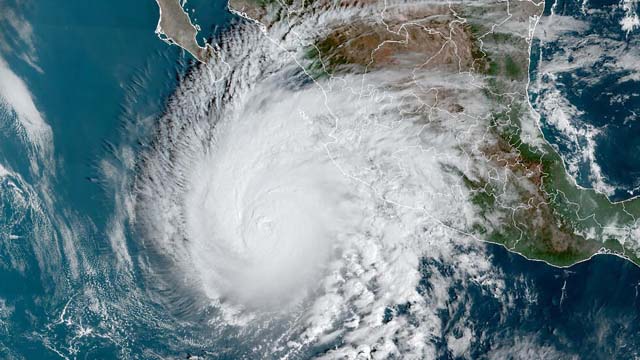
MEXICO CITY, Oct 20, 2023 (BSS/AFP) - Hurricane Norma weakened Thursday to a
Category 3 storm as it headed for Mexico's Pacific coast -- still strong
enough to cause flash floods and damage, forecasters said.
By 2100 GMT on Thursday, the tropical storm was downgraded by one category on
the Saffir-Simpson Hurricane Wind Scale of the US National Hurricane Center
(NHC), which grades hurricanes up to a maximum Category 5.
Norma was located about 265 miles (425 kilometers) west of Manzanillo in the
western Mexican state of Colima, it said, with winds exceeding 125 miles (205
kilometers) per hour and stronger gusts.
The storm was traveling northward towards the Baja California peninsula at a
speed of about six miles per hour.
"Some weakening is expected during the next few days, but Norma is forecast
to be a hurricane when it moves near the southern portion of Baja California"
by Friday night and Saturday, said the NHC.
Norma could reach San Jose del Cabo in the Baja California Sur state by
Saturday as a Category 1 hurricane, and again overnight Sunday in Culiacan in
the state of Sinaloa, the Conagua national water commission said in a
statement.
As the storm headed for the peninsula that includes the beach resort of Los
Cabos popular with American and other tourists, the government activated a
national emergency plan.
More than 6,600 soldiers were placed on alert in the states of Baja
California and Baja California Sur, said the national defense secretariat,
with a focus on the cities of San Quintin, Mulege and La Paz.
"From experience (we know) we need to move fast to put in place teams to help
the population, and food," President Andres Manuel Lopez Obrador told
reporters Wednesday.
Mexico's Conagua national water commission said Norma could make landfall
twice, reaching San Jose del Cabo in Baja California Sur by Saturday as a
Category 1 hurricane, and again overnight Sunday in the state of Sinaloa.
- Flash flooding -
According to the NHC, Norma "is likely to produce rainfall totals of 5 to 10
inches... through Sunday across the far southern portion of the Mexican state
of Baja California Sur," said the statement, with localized downpours of as
much as 15 inches.
"These rains will likely produce flash and urban flooding, along with
possible mudslides in areas of higher terrain."
The center also warned that ocean swells "are likely to cause life-
threatening surf and rip current conditions."
Conagua said it was monitoring water levels in rivers, streams and dams, with
several already brimming.
Hurricanes hit Mexico every year on both its Pacific and Atlantic coasts,
usually between May and November.
Just last week, the country's west was hit by Hurricane Lidia, which left at
least two dead after making landfall as a Category 4 storm, causing flooding.
Days earlier, Tropical Storm Max left two people dead and dozens of houses
flooded in the southern state of Guerrero, one of the country's poorest
regions, authorities said Tuesday.
Scientists have warned that storms are becoming more powerful as the world
gets warmer with climate change.